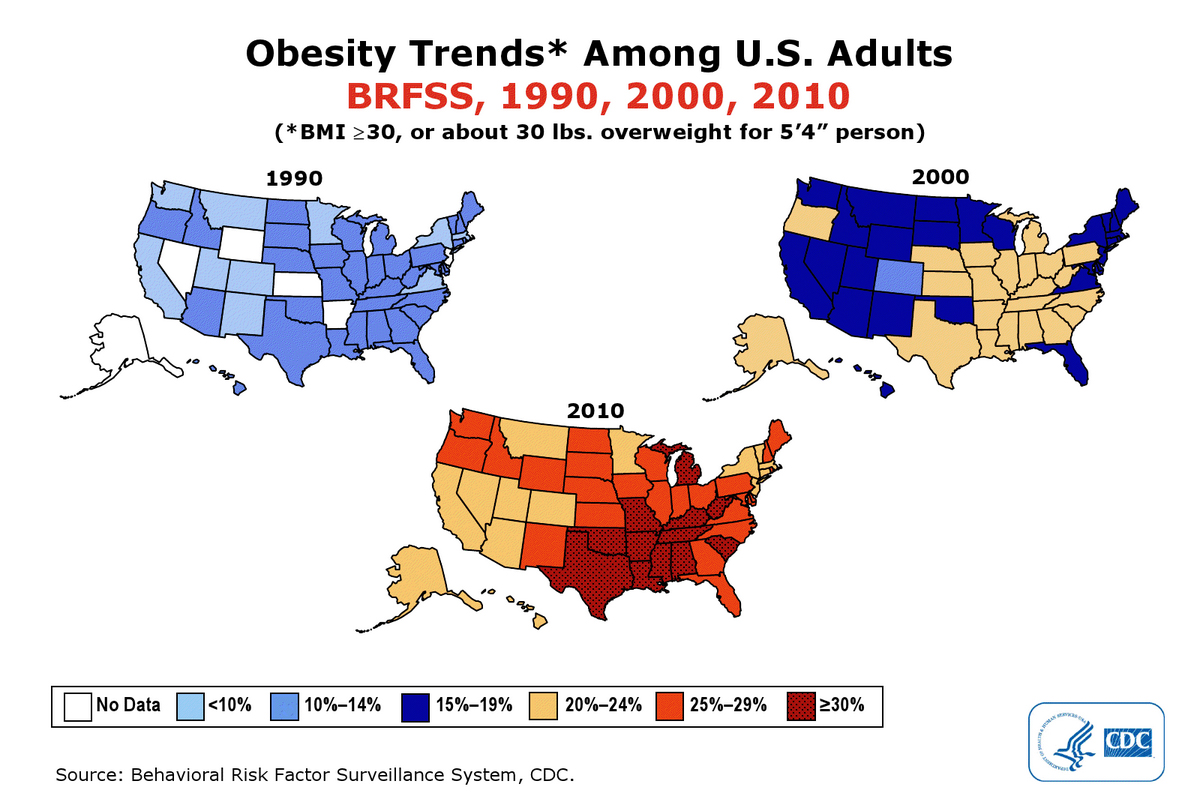
Obesity in Adults
March 18, 2013
According to the Centers for Disease Control, more than one third of adult Americans is classified as obese. Obesity is an epidemic that has increased dramatically in the last two decades.
In 2011, there were twelve states with rates higher than 30%, including Texas, Kentucky, West Virginia and Michigan. Recent data shows that diets high in fried foods and sweetened drinks are common causes for obesity.
As obesity increases, so do the other conditions it can affect. Medical conditions related to obesity include heart disease, strokes, some forms of cancer and type 2 diabetes. Heart disease is currently the number one killer of women, proving to be more deadly than all forms of cancer combined.
The CDC has a number of fascinating but troubling facts regarding obesity prevalence.
- Between 1990 - 2000 and 2009 - 2010, prevalence increased among men but not women
- Adults aged 60 and over were more likely to be obese than younger adults.
- In 2008, medical costs associated with obesity were estimated at $147 billion; the medical costs for people who are obese were $1,429 higher than those of normal weight.
In a study published in 2009 by Eric A. Finkelstein, Justin G. Trogdon, Joel W. Cohen and William Dietz, the link between obese patients and higher medical spending is laid out plain. The paper authors state that obesity-related medical spending increased some 27% between 1987 and 2001. The American Diabetes Association recently reported that that the cost of diabetes, commonly linked with obesity, topped $245 billion in 2012, a cost increase of 41% in just five years.
The CDC’s own graphics show steady increases in obesity prevalence rates across the nation during the 1987-2001 period. The CDC has been pushing nutrition and fitness programs to help combat this frighteningly growing epidemic.

Despite the in-depth research, dizzying statistics and heavy science, methods of combating obesity are rather simple:
- Increase consumption of fruits and vegetables.
- Increase physical activity.
- Decrease consumption of drinks with lots of added sugar.
- Decrease consumption of high-calorie foods.
A recent study showed that many common beliefs about weight loss may be untrue. But what is still true is that the key to weight loss is expending more energy than you take in. Maintaining a healthy, active lifestyle is the best way to fight not only obesity, but heart disease, diabetes, and a host of other conditions and complications.
What are you doing to keep yourself fit and healthy? Tell us!
Facebook
Twitter
LinkedIn
Google+




